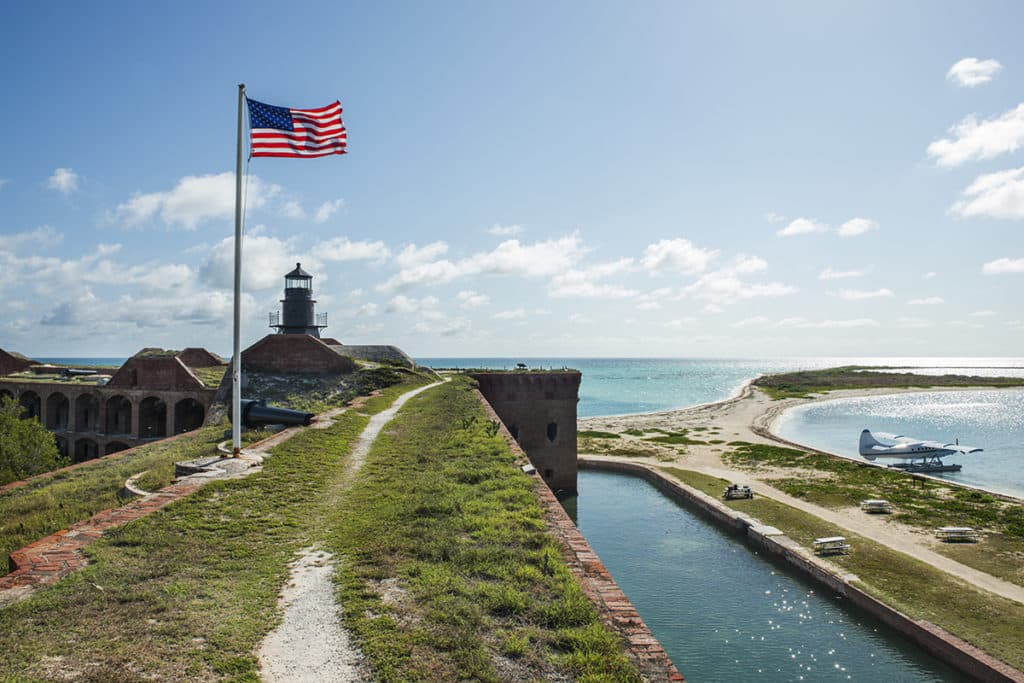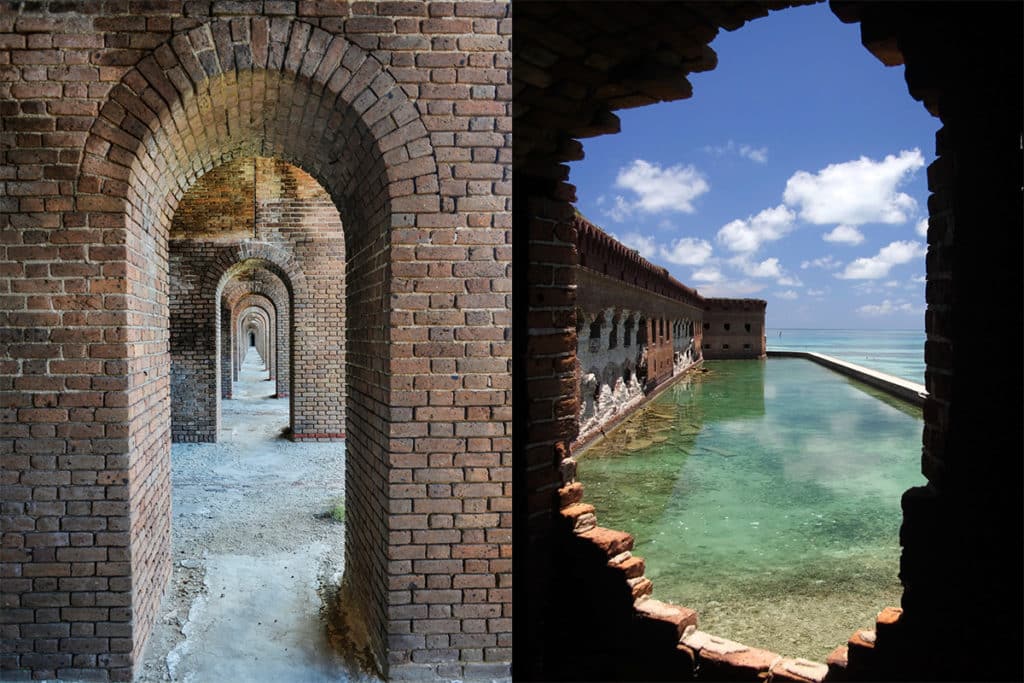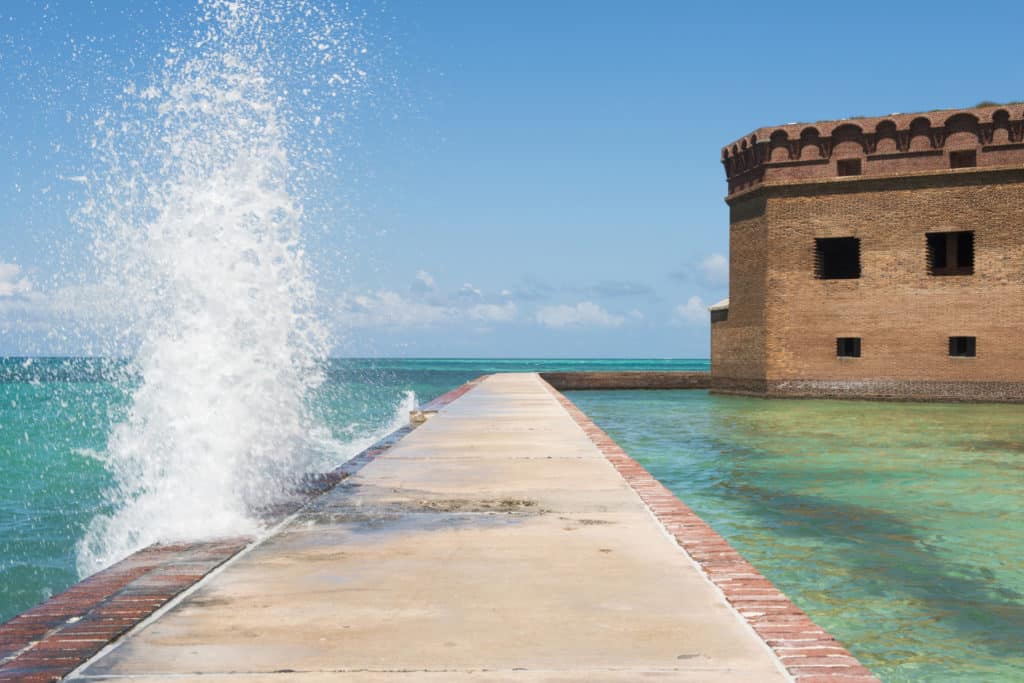
The thing I remember more than anything else, is the feeling of being utterly, entirely alone. As I walked through the remains of the Fort Jefferson military outpost on Garden Key in the Dry Tortugas, I could run my fingers over the brickwork and look through holes in the crumbling walls, but it was the silence that captured my imagination. Not only weres there no other human beings around, but there were no sounds or smells of civilization, either. Not the faint hum of a generator, nor the distant rattling of rigging against a mast — the sound of me taking a deep breath and exhaling seemed somehow louder than a whistling offshore wind.
Solitude is something many of us desire, and it is what has long made the Dry Tortugas a place that we seek out. These islands’ history is a mix of good and bad “alone time,” so to speak; one reason Dr. Samuel Mudd was imprisoned here after setting the broken leg of President Lincoln’s assassin, John Wilkes Booth, is that no matter how loudly he screamed, his voice would echo across the Gulf of Mexico until the sound waves dissipated into the ether. Indeed, as I stood on the grass just outside the walls that once held him and other prisoners, I thought of shouting across the flat-calm water, much as I might holler into a big cathedral to hear my voice reverberate. Here in the Dry Tortugas, there would be no answer. It’s a realization both mesmerizing and humbling, a reminder that even in today’s go-fast world, we really can be alone sometimes.
Ferries and seaplanes come from Key West on day-tripper schedules, and yachtsmen can pick up a mooring at any time, plus the required free permit inside Fort Jefferson. A fisherman might come by while you’re on the hook, offering fresh lobster or other catch for the night’s supper, but after he goes, it might be just you, sitting in the harbor and looking up at the stars. Go ahead and shout across the water, back toward Key West. Expect no answers, and enjoy the silence.
What To Do
KAYAKS AND SNORKELS:
Some of the best fun to be had at Garden Key is on and under the water. Snorkeling is encouraged around the old fort’s moat. Kayakers are welcome with a VHF radio or other way of signaling their own boat for help.
BY THE NUMBERS:
Fort Jefferson was built with more than 16 million bricks in a design intended to hold as many as 1,000 guns for protection. At its peak use, the fort housed close to 2,000 people.

MORE THAN A FORT:
Garden Key, where Fort Jefferson is located, is just one of seven islets in the Dry Tortugas. The others are Loggerhead Key, Bush Key, Long Key, Hospital Key, Middle Key and East Key.
A BIRDER’S PARADISE:
Bring your binoculars for a chance to see sooty terns, brown noddy birds, masked boobies and frigates. All are part of the seabird colony that calls the Dry Tortugas home.
HAVE WHAT YOU NEED:
While Fort Jefferson is a National Park, there are no shops. Bring food, water and other supplies, and be prepared to carry out your garbage too.










